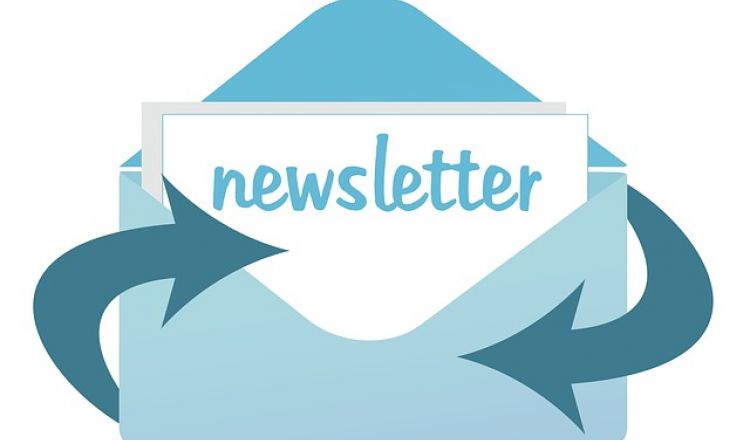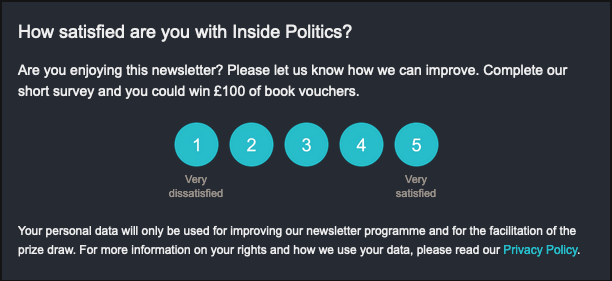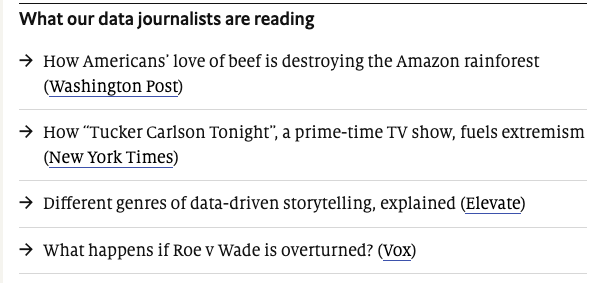What does the future hold for newsletters?
2022-06-07 09:55

The Guardian, The Economist and The Financial Times share insights on how the newsletter format is being used to deepen reader relationships and bolster subscription offerings
"It’s a newsletter, remember the 'letter' part of it, it’s not just the news," says Sarah Ebner, head of newsletters at The Financial Times (FT).
She was speaking on a panel at our recent Newsrewired conference on the future of the newsletter format. Ebner, who oversees a roster of 32 individual FT newsletters, says that for a digital subscription-first news organisation, newsletters are an effective way to deepen relationships with readers and move them towards a paying commitment.
Surveys and star writers
"It’s an amazing, direct relationship where someone has said: 'yes you can send something directly to my inbox' which will bypass all those social media algorithms," she continues.
At the FT, readers can register for a selection of free newsletters, take out a standard subscription which grants access to the FirstFT and Editor's Choice newsletters, or pay a bit more for the premium subscription granting access to 15 premium newsletters. They also have the option to preview or trial the newsletter before committing (at £1 for 4 weeks), and those that do are 134 per cent more likely to go on to take out a subscription.
FT uses the specific metric LTV (lifetime value) to determine the success of newsletters, rather than the historic metric of open rates (which have been made almost worthless by changes to Apple Mail and Ebner thinks Google will follow suit for Android users). LTV instead calculates how valuable the customer is in the long run.
As a result, newsletters have welcomed an influx of its best journalism and journalists, like Stephen Bush on Inside Politics or Isabel Berwick on Working It.
Ebner knows from previous roles at The Telegraph and The Times that it is necessary to be selective over who gets a newsletter. Getting star writers on board is a good way to find success, but readers want to find use in the product and also, frankly, have fun reading it. Remember, it is a letter as well as a news product.
If personalisation is so important, how do you decide who should write the newsletter? Ebner uses pitch documents for staff writers to submit their newsletter ideas, outlining what their expertise is, why their idea should be served by a newsletter (as opposed to another format), and who writes it when they are absent.
Like any good news product, it should seek out reader feedback and take it on board. FT newsletters include a survey at the bottom, which clicks through to a full survey. It asks the reader for a score between one to five, as well as any additional feedback. In one month, FT received an overwhelming 20,000 responses, so be careful what you wish for.

Screenshot of FT newsletters
Survey at the end of Inside Politics newsletter
It can be a good way to sound out other opportunities. Its Swamp Notes newsletter has garnered a following affectionately dubbed 'Swampians'. Newsletters like these, run by strong personalities, have reported from surveys that readers are particularly interested in attending events in order to meet their favourite writers - something FT is well-positioned to satisfy since it runs a successful events business.
Two final pieces of advice from Ebner: newsletters can provide an expert voice for commentary on emerging news stories. Also, lunchtime is an underrated time of day to put out newsletters as many readers will be fiddling with their phones then, and too many competitors think a newsletter only belongs during the commuting hours. Find 20 minutes to knock together a lunchtime read.
Going under the hood
There is a similar story at The Economist, where newsletters exist to acquire and retain digital subscribers - which is always its determining factor whether it expands into new territory.
There are fewer newsletters on offer than the FT, but they are built around staple subjects and specialities, like climate change, science and American politics. These newsletters are created exclusively for paying digital subscribers, but free newsletters are also on offer.
Senior newsletter editor Aaron Coultate also said that as open rate becomes less important, reader feedback is growing in importance. He keeps one eye on the recipient list size as well, as the health of a newsletter can be gauged by weekly growth. Clickthrough rate, while not an "endgame", is also a worthwhile pulse check.
The Economist is well known for being 'byline-less', which Coultate said is because of the "collegiate" and "collaborative" nature of its newsroom. The credit belongs to the whole team. But newsletters are a slightly different story, where writers for the speciality newsletters get a photo byline.
"You can read Economist journalists writing in the first person, you can see their face and name, and that instantly makes it a unique channel and form for us, and we lean into that with the tone," he says.
Unsurprisingly, Economist readers are data lovers. Through audience feedback, it has learned that readers love to look "under the hood of its journalism" to know how it has come together. It serves that need through its Off The Charts newsletter, featuring staff from across the data team showing off the programmes and techniques that they use, plus some wider recommended reading.

Screenshot via The Economist Off The Charts newsletter
Further reading on Off The Charts
Coultate works right across editing, production, data and strategy for newsletters. His best piece of advice is to focus on cross-department communication, as newsletters require teams from product, editorial, marketing and sales all to be aligned. Silos can easily form as a result, so include everyone from the very beginning.
"So if you want to launch a new newsletter, everyone [must] understand what the reasoning is, maybe what the data case is, what the editorial case is and then bring that to the table to get everyone’s buy-in."
Recreating the newspaper experience
As part of a wider revamp and recruitment drive into newsletters, the Guardian launched a new, daily current affairs newsletter, First Edition, in April this year.
Award-winning journalist Nimo Omer joined the team three months ago to write the newsletter alongside editor Archie Bland, who moved across from the Guardian's popular Today in Focus podcast.
The newsletter summarises five big stories for time-poor readers and then provides an in-depth explainer of one significant story. Omer points to the unknotting of the Northern Ireland protocol as a good example.
Additionally, there are wider nods to other articles the team are reading, non-news Guardian pieces, the latest episode from the aforementioned Today in Focus, a glimpse at the front page of the newspaper, and a story from its renowned constructive journalism section The Upside.
As with all its journalism, the Guardian's newsletters are free and its priorities are showcasing the diversity of content on offer. 'The best of the Guardian' as a product in of itself.
In its early days, reader feedback has already proved influential in bringing back the sports section at the request of readers unhappy with its initial omission.
It has already experimented with personalisation as far as the sending email address that readers see in their inboxes. It tends to be that emails performed better when sent from the writer's own email address versus the general email address. This has some caveats, Omer warns.
Readers may not know the individual writers by their name and might be confused as to what they are being emailed. The benefit of using a general email address is that readers will recognise the brand name and remember this is what they signed up for.
Moving forward, she adds that First Edition will target original reporting specifically for the newsletter format, rather than simply promoting wider Guardian journalism. She wants to see a future where the newsletter experience truly mimics the newspaper one of old.
"Newsletters are in many ways very similar to an actual newspaper in that they’re a fixed point in time. There’s no changing it, there’s no going back once it’s in your inbox," she concludes.









